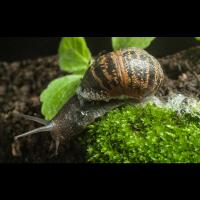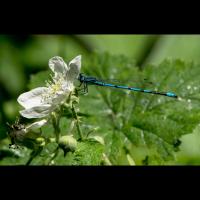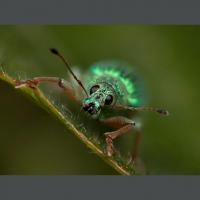The “wee beasties” in your garden…
Following on from a previous article about depth of field, this week we will look at photographing insects and the “wee beasties” to be found in the garden – spiders, beetles, butterflies, and even snails for example. The advantage is that they are right in front of us even if sometimes hard to see – and the experience of trying to photograph them will not only provide you with some intriguing photo opportunities into the world of nature but also demonstrate their fascinating variations of features and colours. There is beauty to be found here albeit on the small scale – a butterfly’s wing, the curl of a snail shell, the colours of a beetle.
The first requirement is obviously to find your subject. And they are everywhere – in the bushes, on the ground, or in the grass. So keep your eyes open! The next is perhaps to identify what you are looking at – and that is often not easy but the internet is usually a good source of help, with specialist sites providing images for comparison and even helplines for advice. But why the need to identify? Well, not all of these little creatures are harmless – if they feel threatened, they may bite or sting, sometimes quite painfully so require you wearing gloves and other protective equipment or even moving away and giving them space. Identifying the creature will also enable you to develop your knowledge – of their habitat, their feeding, whether they bite or sting, life cycle, time of day likely to be active etc. Butterflies like sunshine and particular flowers to feed on for example, whilst flies are slow to move on cold mornings so easier to photograph.
Patience and slow, quiet movement are essential! Your subjects are unlikely to follow instructions to “keep still” and rapid movements will disturb them so they fly off. You just have to wait for the best moments to take your shots – and lots of them – before getting that “magic moment” when all comes into focus.
Wide angle lenses are probably not a good choice, given the generally small size of the subject. Instead, lenses capable of focussing as close as 9-12 inches for example, in particular capable of capturing images at a 1:1 magnification (a “macro” lens ideally in the range 100-180mm), or a lens or a telephoto in the range 200-400mm where you can stand away from the subject but still get a good size record shot would all be suitable.
On the subject of depth of field – the closer you get to the subject, the shallower this becomes, making it difficult to get the whole subject into sharp focus, even when using a small aperture such as f11 or f16. Shooting side-on to an insect such as a damsel fly will help, whereas a head-on shot will probably have only a tiny part of the head in focus, the body and wings increasingly out-of-focus. In such conditions, keeping the eyes in focus is key to a shot with real impact.
You may also find that you are taking images in quite subdued lighting conditions (under trees or in bushes for example), so an additional source of light may be required – increasing the ISO setting, the use of a flash gun or even a piece of white card to bounce some extra light on the subject will all help, in particular if using a small aperture as suggested when a longer exposure is required.
Lastly, be patient – insect photography takes time and can be very frustrating, but get it right and the results can be a delight.
However you take your images, if you like the result, then good enough – your shots will provide pleasure and enjoyment. Check out our website – www.iomps.com – for more ideas to stimulate and inspire your photography.
By Chris Blyth



